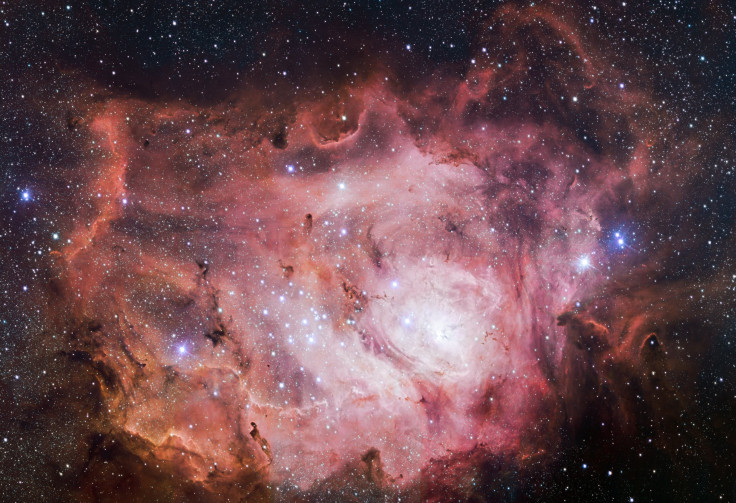The Lagoon Nebula, Messier 8, Glows Bright With New Stars In New VLT Photos [VIDEO]
New images show the Lagoon Nebula, classified as Messier 8, located just 5,000 light-years from Earth, as teeming with star formation activity. The mix of gas and dust has made the nebula a perfect stellar nursery filled with bright young stars.

The European Southern Observatory’s VLT Survey Telescope, VST, as part of the VPHAS+ Survey, captured the revealing new images of the Lagoon Nebula, located in the constellation of Sagittarius. Messier 8 is a giant gas and dust cloud that is 100 light-years across and features several stellar clusters.
According to ESO, the new image of the Lagoon Nebula is just one example of the detailed work that is being carried out by 11 public surveys, three of which are using the VST to observe the skies in visible light. The VPHAS+ Survey is currently scouting the Southern Galactic Plane and will observe 500 million objects, with the primary scientific objective of mapping the galactic disk and star formation activity. VPHAS+ will observe rare stars such as Herbig Ae/Be stars, pre-main-sequence stars surrounded by a cloud of dust and gas.
Other VST Surveys include the Kilo-Degree Survey (KIDS) and the VST ATLAS Survey. KIDS’ primary scientific objective involves observing weak gravitational lensing as well as studying dark matter, galaxy evolution and quasars, an incredibly bright object driven by an active supermassive black hole. The VST ATLAS Survey will observe baryon acoustic oscillations, or baryon wiggles, to gain new insights on dark energy.

The Lagoon Nebula has been previously observed in infrared light, by ESO’s Visible and Infrared Survey Telescope, VISTA, and as part of the GigaGalaxy Zoom project. According to ESO, the dark sections are clouds of dust and gas that have collapsed and will lead to the birth of young stars. The Lagoon Nebula is also home to an open stellar cluster, NGC 6530, which is comprised of 50 to 100 stars.
A video of the Lagoon Nebula, courtesy of ESO, can be viewed below.
© Copyright IBTimes 2024. All rights reserved.






















